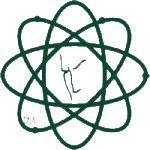WHAT IS ROOT CAUSE ANALYSIS?

RCA Definition: Root Cause Analysis is a process or procedure that helps guide people to discover and understand the initiating causes of a problem, with the goal of determining missing or inadequately applied controls that will prevent recurrence.
Repeatable Procedure is Key
The key to an effective root cause analysis method is having an objective and repeatable procedure that produces verifiably accurate results. The results should be a product of the process itself, not the opinions or assumptions of the analyst. It should uncover all root causes and, therefore, provide all of the realistic solution options. If the method is one that permits the analyst to pick the particular cause that he considers the most important, thereby filtering out other root causes, the options available to the decision-maker are consequently limited. There are many methods of RCA that allow the user such latitude. These subjective types of systems thus often serve only as a structure for the user to outline and report his opinion about the facts of a case.
Not All Procedures Created Equal
Most root cause analysis methods would claim to subscribe to the definition above and provide some level of procedural guidance for identifying root causes. But not all root cause analysis procedures are created equal.The procedures of most RCA processes allow the user too much latitude, and end up leading the investigator to simply document what he thinks he already knows about the problem. For there to be a thorough investigation, the RCA procedure itself (this is a key point to observe) must lead the investigation and analysis. Importantly, the procedure itself should challenge the investigators assumptions and thinking about the facts of the case.

Three Common RCA Paths:
There are hundreds of RCA consultants and many RCA methods in the marketplace. Most solutions commercially available are 20-80 year old antiquated approaches re-packaged and rebranded as if something new has been created. Some systems of Root Cause Analysis are simply philosophies and a basic process that create a loose forum for brainstorming. But all of the various root cause analysis procedures that go beyond simple brainstorming take one of three basic approaches:
1. Categorization: Analysis by Pre-definition
RCA procedures that rely upon categories require users to look through lists of known failure modes and pre-defined categories of common operational deficiencies and choose what (in their opinion) applies to their event. Was it this? Was it this? Clearly, working from a list of possible causes cannot lead to discovery. These processes are easy to do, and can be valuable, but often fail because the user is limited from discovery of anything new by the very nature of the category list itself. Users of this type of procedure are not led to look at the dynamic situation before them and are instead encouraged to limit the analysis to the listed possibilities. In effect, they are required to force the unique facts of the case into pre-defined categories that may or may not exactly fit the facts of the case. Again, the subjective task of deciding which category most closely fits the actual circumstances introduces potential error.
2. RCA Tool Chest: The Grab Bag Approach
An event can be viewed from several different perspectives. In the past, these differing viewpoints have spawned their own investigation/analysis process. For example, one can see the problem as a series of events leading to a conclusion (factor charting). Or, one can look at the sequence of events to find where physical or organizational barriers can be placed to prevent recurrence (barrier analysis). An event can also be seen as a sequence of changes in the environment (change analysis). These and other views and their associated analysis techniques have value. But, each individual process, by its very nature, serves to limit the analysis to a one-dimensional view of the problem. In an effort to overcome that limitation, some root cause analysis methods advocate conducting several of these processes, one-after-another in an attempt to expand the view and understanding of what caused the problem, stitching together multiple processes into one large mega-process. These methods often allow a user to choose from multiple analysis approaches that are thought to be the most appropriate method (or combination of methods) for the causes of the event at hand. This expectation places an unrealistic responsibility upon the analyst because before the analysis is actually conducted, it is not possible to classify the nature of its causes. In the end, the users often pick their favorite techniques within the tool-bag of options. Reports coming out of these processes are often one-dimensional, influenced more by the users work experience than the facts of the case.
3. Rule-governed Process: The Right Tool for Any Job
There is a repeatable singular root cause analysis process so well designed that the best elements of the classical approaches are integrated into a single streamlined logic procedure. This process is not simply multiple lesser processes done after one another and stitched into a mega process. It is a directed logic thinking process that is governed by logic rules, instead of lists, opinions, or pre-conceptions. Because of this, it can be applied to issues ranging from human performance to operations issues, from industries ranging from space exploration to cheese making. The process is called REASON®. REASON guides you step-by-step to discover all of the factors that combined and interacted to produce your problem. In every system except for REASON , the quality and thoroughness of the investigation is a matter of opinion. In REASON, quality and thoroughness are measured by the degree that its logic has been followed and adhered to during the investigation. There is a right way and a wrong way to apply the logic, it is easily checkable and it is repeatable. For organizations wishing to standardize Root Cause Analysis quality and process throughout their organization, only REASON provides this level of standardized repeatability. With over thirty years of experience and success behind it, REASON® will help your organization dramatically increase the benchmark of quality, thoroughness, and consistency within your Root Cause Analysis investigations.

